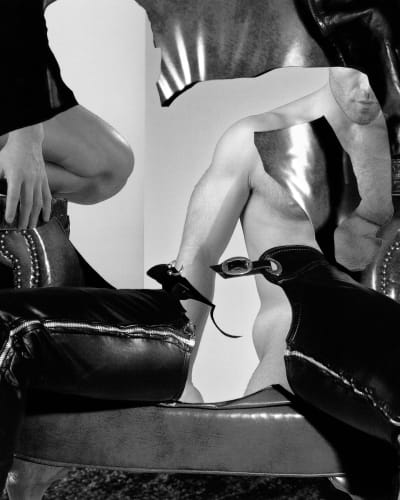Michael Young came across the calendars almost by accident. He’d been collecting vintage beefcake magazines –source material for a different project–when he met David, a seller on eBay based in Los Angeles. As he ordered more magazines, David started including freebies: an extra magazine here, a gay pornography calendar there. At first, he didn’t know what to do with the calendars, but he held onto them and placed them in a box for safekeeping. A year later, he brought them out and took a closer look.
All of the calendars were released during the 1980s and 1990s, roughly coinciding with Young’s
birth, and later, his coming of age as a young gay man. Looking back now, he describes the years preceding his coming out in 2000 as “lost years,” a time when others expected him to be straight.
These calendars would ultimately form the foundation of his new series Hidden Glances. The top layer is a calendar page featuring the cut-out silhouette of a man, removed using an X-Acto knife; the bottom is a picture of a second man, viewed through the “window” created by the first.
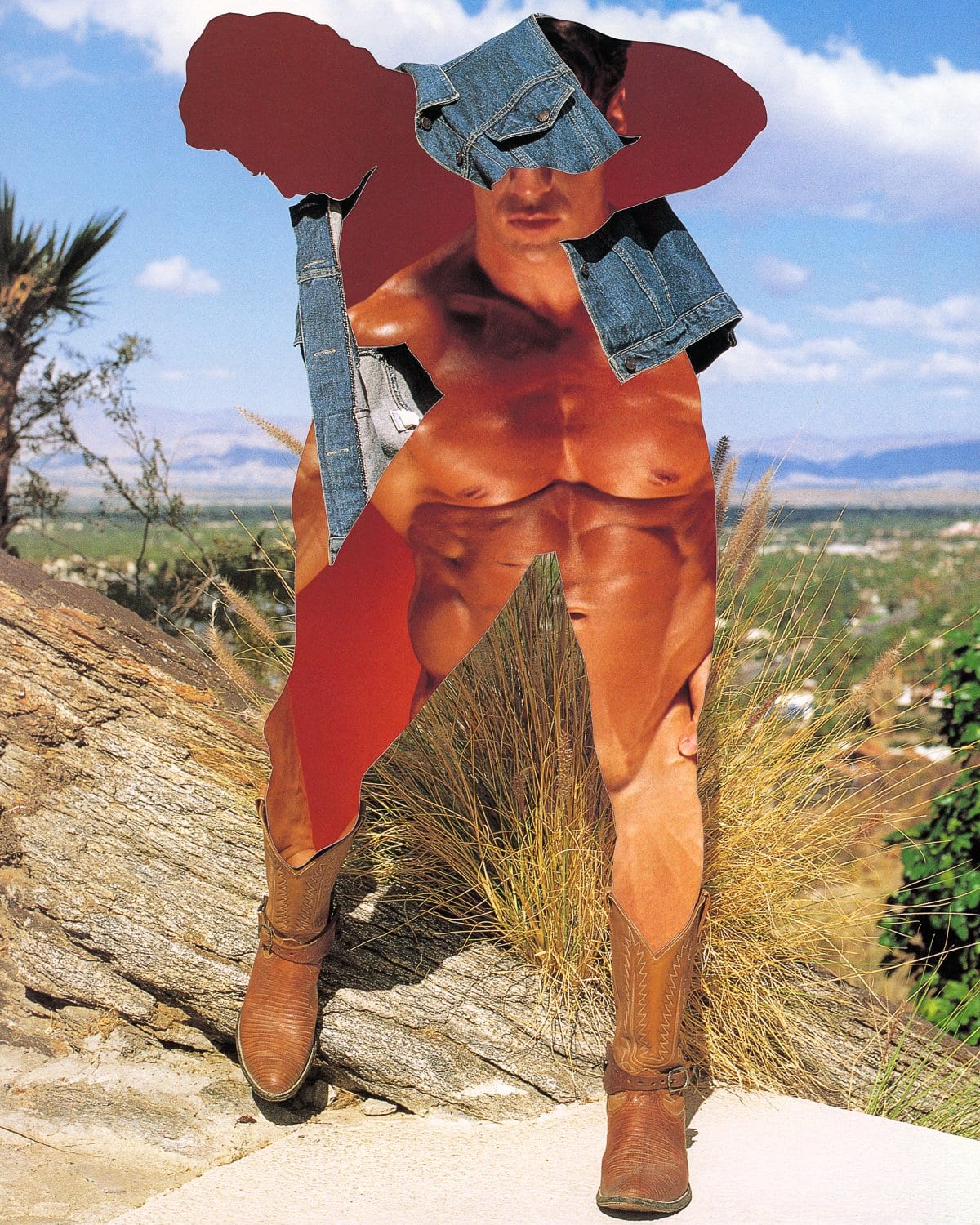
When he was a kid, Young lived just outside New York City, and he accompanied his parents on
trips to visit Greenwich Village–a neighborhood rich in gay history and the home of the Stonewall Inn. “I always remember my parents reminiscing about how cool Greenwich Village was when they were young and dating. For me, there was a sense of intrigue and trepidation. I was intrigued because of its heavy gay presence, but I also feared that being in the village would out me,” he says now. “As a teen, to see men walk hand-in-hand down the street and drag queens coming out of their apartment buildings in the middle of the daytime was eye-opening. Here, people could live their lives freely, but at school, I had to avoid being teased at all cost.”
In some ways, the process of working with the calendars reminded Young of those childhood trips into the city and those many years trying to hide his true feelings. “In certain ways, making this new work feels similar to those days walking down Christopher Street and passing gay bars,” he says. “Watching guys make passes at each other or steal another glimpse of a guy he just passed on the street were all visuals I am integrating into this work.
“It’s about seeing, being seen, wanting to be seen, but at the same time, wanting to remain
anonymous and still being somewhat hesitant to reveal one’s true self. Throughout the images in the series, I am able to create visual metaphors of those feelings. Not only does layering of one calendar image over another allows me to play with time and compress it, but it also allows me to visualize the internal push and pull between wanting to be seen and hidden at the same time.”
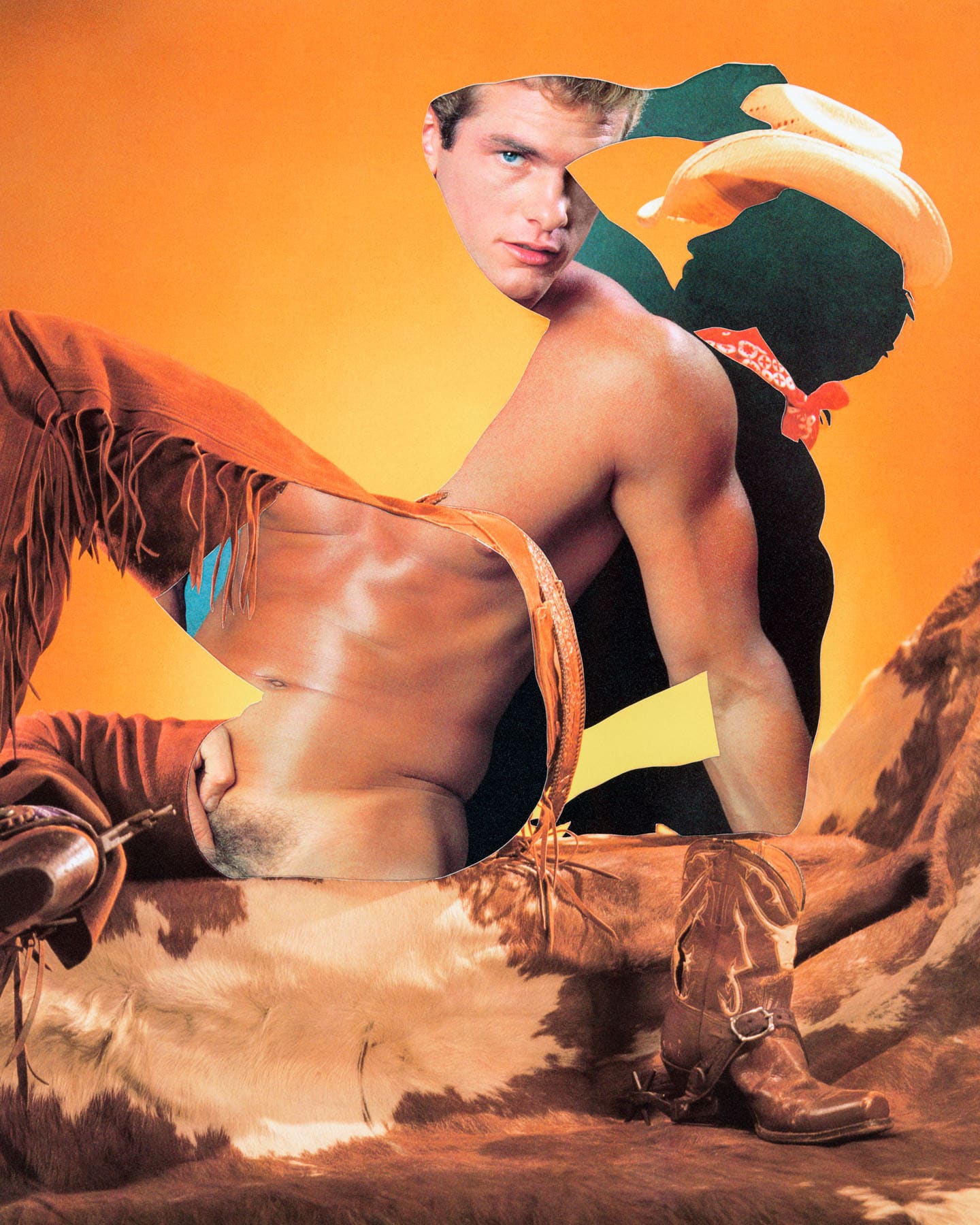
Another element that intrigued him about this way of working was the idea that nothing he did
could be undone. Once a cut was made, it couldn’t be taken back or changed, just like one’s past.
“After culling a large collection of calendars, I decided that I needed to create some parameters for the work,” Young explains. One of his rules: he works with one calendar at a time. “Only images from that twelve-month calendar can be used as one of the layers, and, at this point in time, each image is built from only two images,” the artist explains.
“I like to take quick photos on my iPhone as I build the photographs, and once I have a
composition that I like, I tape it all together and then make the final photo. While I am using collage as a technique, I prefer to call them ‘reverse collages’ because I’m more interested in the negative space and shapes that the upper layer creates when laid on top of another month’s image.”
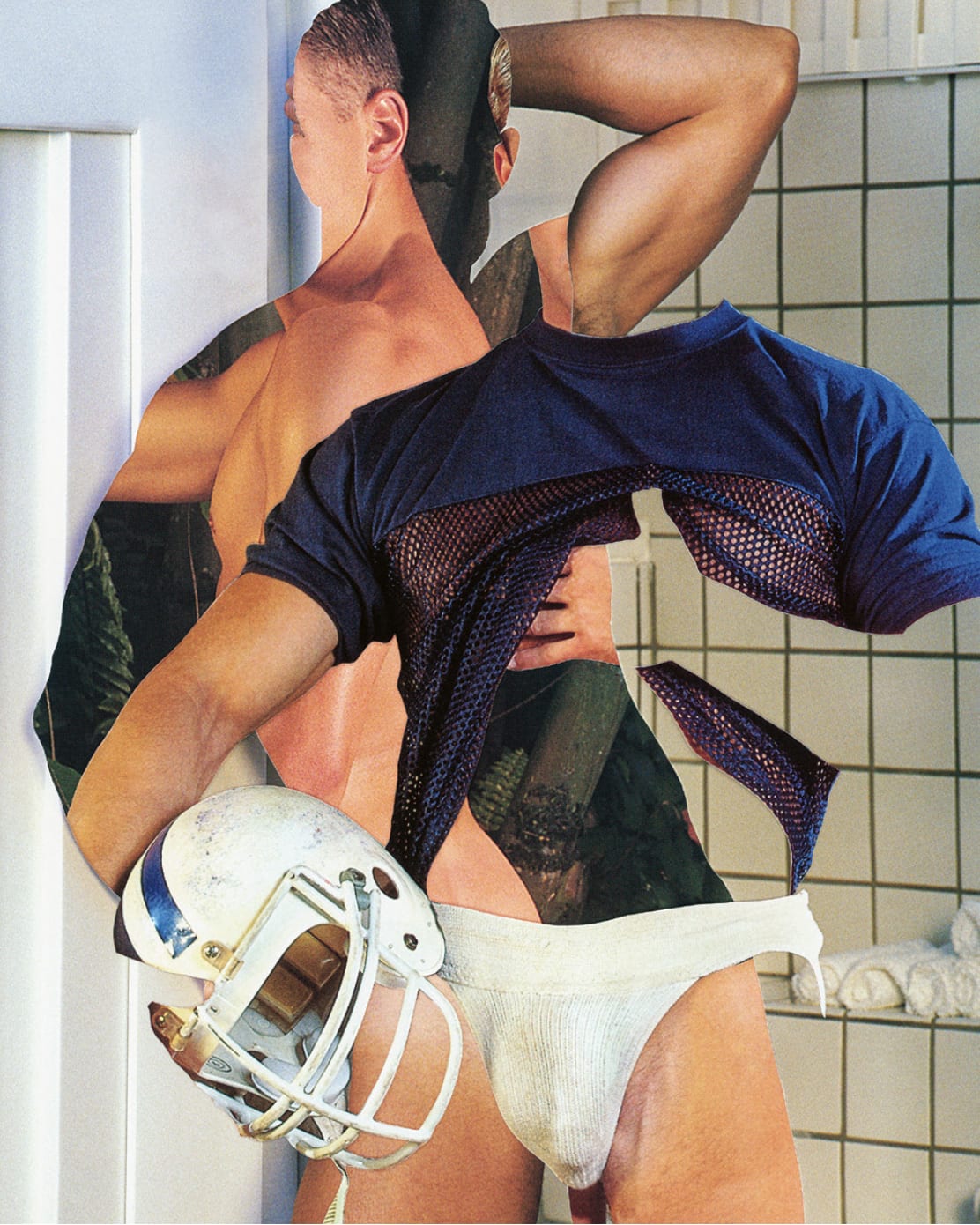
Finally, while Young does use Photoshop to tidy up any distracting scratches and signs of age, he always allows evidence of the cuts to remain. “I want the work to record my physical interaction with the paper,” he says. “When printed large, one really sees the cuts that I’ve made. I like that the work is composed and created on a table rather than digitally in Photoshop–it has a raw and intimate quality that allows the viewer to see my hand in the making of each piece.”
Young doesn’t know the histories behind the former owners of the calendars, but he’s intrigued by the mystery. “When I was little I remember seeing calendars of naked women on the walls in auto repair shops, but the thought of displaying gay calendars on a wall still puzzles me,” the artist admits. “I wonder if gay men actually hung these up on the walls of their homes. What’s even more fascinating to me is that all of the second-hand calendars I’ve purchased are completely blank–no birthday reminders, no doctor appointments, nothing. They are devoid of all personal history.”
I ask him if he can imagine somehow transporting these pictures back in time–so that his younger self could see where he is today. What might they have meant to him? “I would hope they would give my younger self more confidence to accept who he was and be proud and not wait so long to embrace his identity,” he tells me.
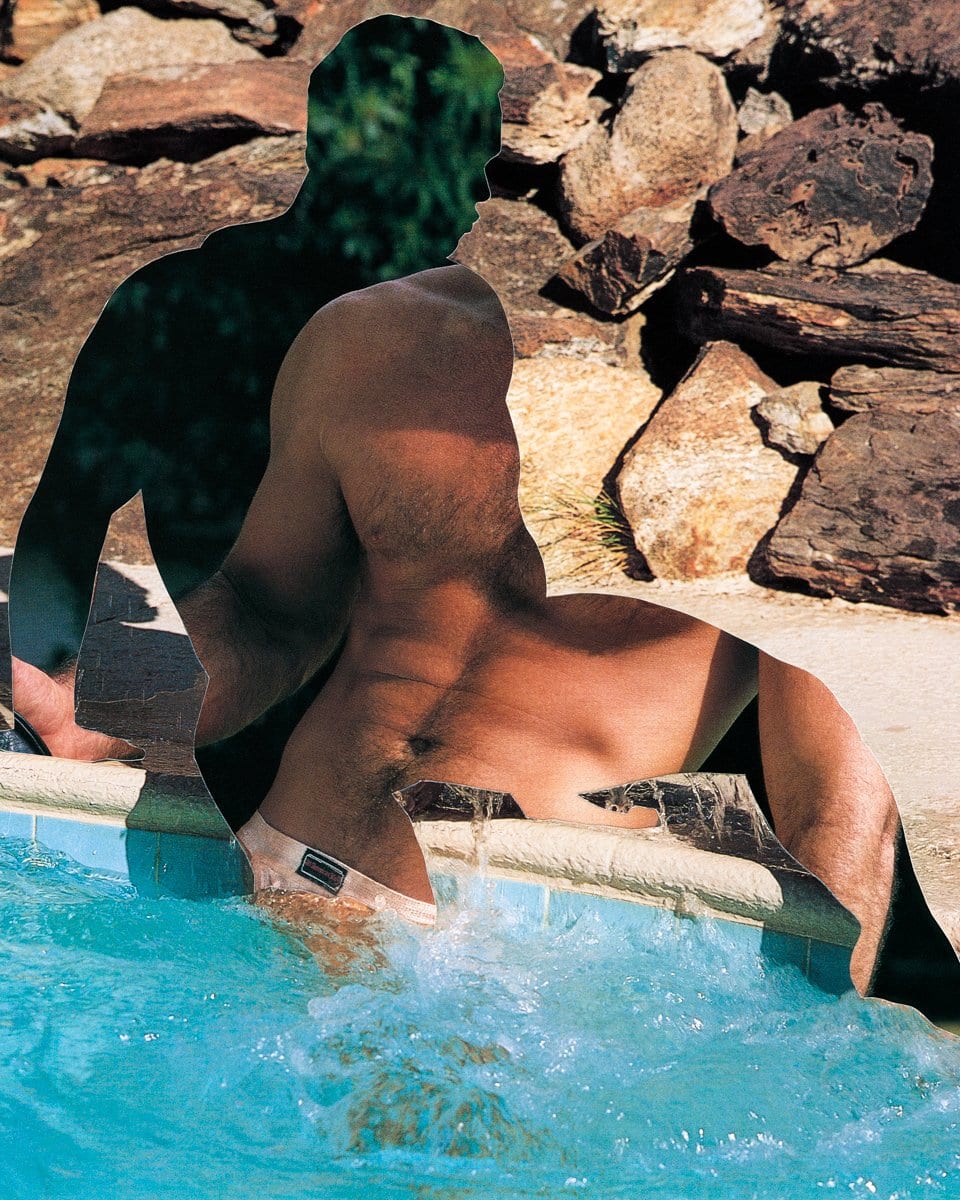
You can follow the evolution of Hidden Glances on Instagram at @hiddenglances.
